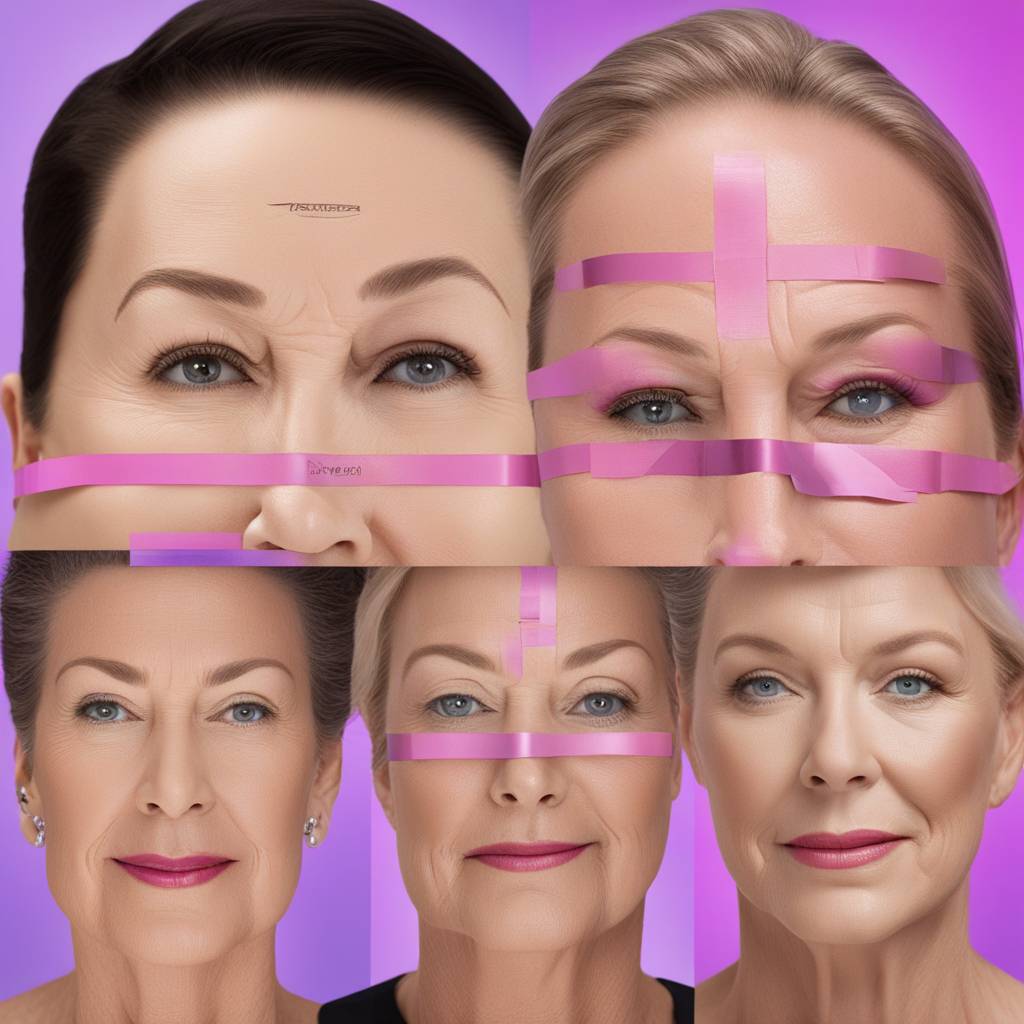Face taping is a technique that is gaining popularity in the skincare industry as a way to reduce fine lines and wrinkles. Pioneered by chiropractor Dr. Kenzo Kase in Japan in the 1970s, face taping involves using tape to lift the skin, allowing for better circulation of nutrients and oxygen underneath. This helps to reduce puffiness, soften lines, and contour the skin. When used overnight, face taping can result in brighter, more youthful-looking skin.
Face taping is particularly beneficial for those who sleep on their side, as it can help prevent or soften fine lines that may be caused by muscle shortening as we age. While it may not completely erase deep lines and wrinkles, regular use of face taping can be a preventative technique for those starting to see signs of collagen degradation and uneven skin texture. It is considered an alternative approach to traditional skincare methods such as using retinoids or undergoing in-clinic treatments like laser therapy.
To apply face tape effectively, it is important to place the tape along the lymphatic system and muscle structure of the face. This includes areas like the nasolabial folds, the outer corners of the eyes, around the cheekbones, and on both sides of the forehead. It is crucial not to stretch the tape, as this can stress the muscles and potentially cause more harm than good. Using kinesiology tape designed for sensitive skin or for children can make the process more comfortable and gentle on the skin.
In the skincare industry, there is a growing emphasis on finding ways to reduce fine lines and wrinkles, as evidenced by the increasing number of Google searches for tips on achieving smoother skin. Face taping is one of the latest trends in this quest for youthful-looking skin, with celebrities and skincare professionals endorsing its benefits. Utilizing tape to lift and support the skin can help improve blood flow, relax muscles, and enhance the overall appearance of the skin.
If you are considering trying face taping as part of your skincare routine, it is essential to use the right type of tape and follow proper application techniques. Choosing kinesiology tape that is gentle on the skin and breathable can make the experience more comfortable. Online resources, such as diagrams of the face’s lymphatic system, can provide guidance on where to place the tape for optimal results. By incorporating face taping into your nightly routine, you may see improvements in the texture and appearance of your skin over time.
Despite the increasing acceptance of aging and natural beauty in society, many individuals still strive to maintain a youthful appearance through skincare practices. Face taping offers a non-invasive and innovative approach to addressing fine lines and wrinkles, allowing for a more contoured and rejuvenated complexion. By leveraging the benefits of face taping, you can enhance your skincare routine and achieve smoother, more radiant skin.













